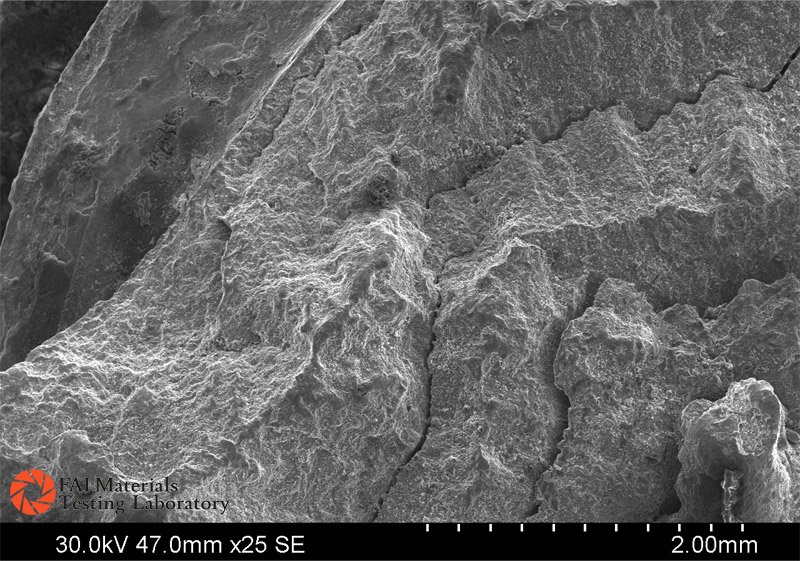Scanning Electron Microscopy
Electron Microscopy & X-Ray Spectroscopy
Scanning Electron Microscopy
FAI owns and operates a computer controlled field emission scanning electron microscope (SEM) for imaging and elemental analysis. By using Secondary Electron Imaging for topography and Backscattered Electron Imaging for compositional information, samples can be characterized both ways at the same time. With EDXS Mapping described below, elemental distributions can be visualized.
• High Resolution (features as small as 50 to 100 nm for most materials)
• Large depth of field allows observation of fracture surfaces and other high relief subjects.
• Wide magnification range: 10x to 25,000x
• Calibrated (NIST Traceable) dimensional analysis
• An extra large sample chamber (has allowed the imaging of objects as large as a truck wheel hub)
• The Field Emission Gun can work with accelerating potentials as low as 1kV up to 30 kV (which allows imaging of delicate structures or elemental analysis of heavy metals).
Energy Dispersive X-Ray Spectroscopy
EDXS is an analytical technique used for the elemental analysis or chemical characterization of a sample. This spectroscopy technique relies on the energy of the electron beam to excite the electrons in the sample. These excited electrons change orbitals and give off x-rays with characteristic energies. These x-rays are collected and allow for both characterization and quantification of the elements in a sample. Our system has a thin beryllium window so any element on the periodic table except for hydrogen, helium, lithium, and beryllium could be detected (assuming it is present in a solid sample at levels over 0.1% by weight).
Elemental analysis by SEM-EDXS will identify what elements are present and determine their concentrations. This system can be used to Map the elemental content – the next level beyond the compositional images given by backscattered imaging.
Related Services: Fourier Transform Infrared Spectroscopy (FT-IR) Analysis and Optical Microscopy
The elements detected by SEM-EDXS can include toxic metals like lead, chromium, arsenic, mercury and others, but will only be detected if they are present at concentrations of 0.1% or more. If analysis of trace levels of these metals is needed, other tools like ICP-AE must be employed.


